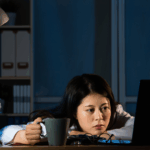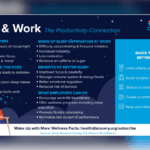English is full of sayings that connect respiration with ease and relaxation: “breathe deeply to relieve stress,” “as natural as breathing,” and “it’s a breeze.” We take breathing for granted…that is until pollution or illness, like chronic obstructive pulmonary disease (COPD), make it difficult or impossible to inhale.
Between the airborne COVID-19 pandemic and massive wildfires impacting many regions, our lungs are under attack. However, the more than 15 million Americans diagnosed with COPD (and many more undiagnosed) struggle to breathe every day – and are especially vulnerable to these new threats.1
Tightness in the chest, persistent cough, needing to catch your breath during routine activities…as if this wasn’t bad enough, researchers found that COPD increased the risk of developing lung cancer, colorectal cancer and liver cancer, among other major cancers. They suspect that COPD may cause harmful mutation in the cells of other organs beyond the lungs.2
Far more serious than just causing its victims to be winded, COPD is the fourth leading cause of death in the United States, as well as a major cause of disability.3 This impact extends to both patients and their families. A recent study illustrates just how debilitating COPD can be and the emotional toll it can have on caregivers. Researchers found that while breathlessness annoyed patients with COPD, it was more upsetting to caregivers watching their loved ones struggle to breathe. Both patients and caregivers reported the feeling of a “shrinking world” from the limitations of frequent shortness of breath.4
You Are What You Breathe: Impacts of Air Quality

Like so many events in 2023, the wildfires in the western U.S. and Canada have underscored existing concerns, in this case, air quality and the impact it can have on the 34 million Americans living with chronic lung conditions.5 Photos of ominous orange skies stretching across the Eastern Seaboard this summer clearly illustrated the danger wildfire smoke presents to everyone, but poor air quality can present risks for those living with lung conditions even without natural disasters. Researchers studying the link between disease, including COPD, and urban pollution called air pollution, “the most important environmental risk factor for health.”6
According to the American Lung Association’s State of the Air report released in 2023, “nearly 36% of American – 119.6 million people – live in places with unhealthy levels of ozone and particle pollution.” Air pollution related to heat, drought and wildfires are putting millions at risk.7
Those living with COPD and other chronic lung conditions should monitor their local air quality index (AQI) by visiting AirNow.gov. While extremely poor air quality can affect anyone, those with COPD may need to stay inside or limit their time outside even with moderate air quality as can happen during otherwise beautiful weather. Being stuck inside is part of that shrinking world feeling that patients with COPD and their caregivers report. This table from Airnow.gov illustrates air quality levels:
| Daily AQI Color | Levels of Concern | Values of Index | Description of Air Quality |
|---|---|---|---|
| Green | Good | 0 to 50 | Air quality is satisfactory, and air pollution poses little or no risk. |
| Yellow | Moderate | 51 to 100 | Air quality is acceptable. However, there may be a risk for some people, particularly those who are unusually sensitive to air pollution. |
| Orange | Unhealthy for Sensitive Groups | 101 to 150 | Members of sensitive groups may experience health effects. The general public is less likely to be affected. |
| Red | Unhealthy | 151 to 200 | Some members of the general public may experience health effects; members of sensitive groups may experience more serious health effects. |
| Purple | Very Unhealthy | 201 to 300 | Health alert: The risk of health effects is increased for everyone. |
| Maroon | Hazardous | 301 and higher | Health warning of emergency conditions: everyone is more likely to be affected. |
How to Reduce Your Risk
A continuous exposure to pollution, fumes, or most commonly, tobacco smoke, damages lungs, causing COPD. According to the National Heart, Lung and Blood Institute, the following symptoms can be signs of COPD:10
- An ongoing cough or a cough that produces a lot of mucus
- Shortness of breath, especially with physical activity
- Wheezing or a whistling or squeaky sound when you breathe
- Chest tightness
COPD is a chronic, progressive condition without a cure. However, despite the serious symptoms and complications, COPD is preventable and often treatable if identified early. The first step is to quit, or better yet, never start;11 cigarette smoking is the leading cause of COPD.12 You can also protect yourself by being aware of dangers like chemicals and fumes in your home and at work. Take proper precautions to avoid being exposed to fumes for a long period of time.
Caring for our lungs is as essential as the quality of air we breathe. If you smoke, visit the Centers for Disease Control and Prevention and the American Lung Association for resources to help you quit.
2The American Journal of Managed Care, “COPD Is an Independent Risk Factor of Colorectal, Liver, Other Cancers”
3COPD National Action Plan | NHLBI, NIH, “COPD”
4The American Journal of Managed Care, “Chronic Breathlessness in COPD Affects All Aspects of Life, Both Patients, Caregivers Say”
5American Lung Association, “Our Impact”
6The American Journal of Managed Care, “COPD Closely Linked to Pollution, Outpatient Hospital Visits in Urban Area”
7American Lung Association, “State of the Air 2020 – Key Findings”
8U.S. Environmental Protection Agency, “Particulate Matter (PM) Basics”
9U.S. Environmental Protection Agency, “Ground-level Ozone Basics”
10COPD Symptoms, “COPD”
11American Lung Association, “COPD Causes and Risk Factors”
12National Heart, Lung, and Blood Institute, “COPD National Action Plan”
Visit HealthDiscovery.org for related topics.











